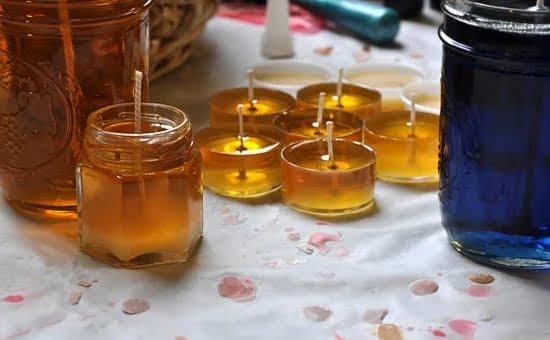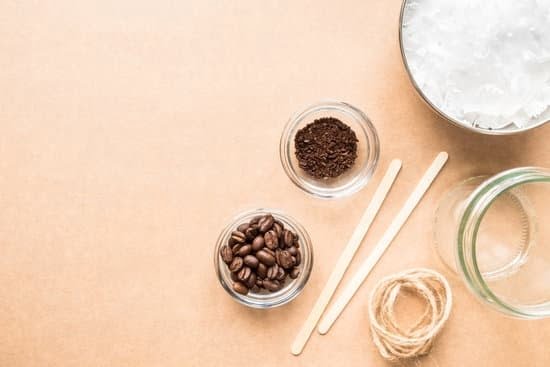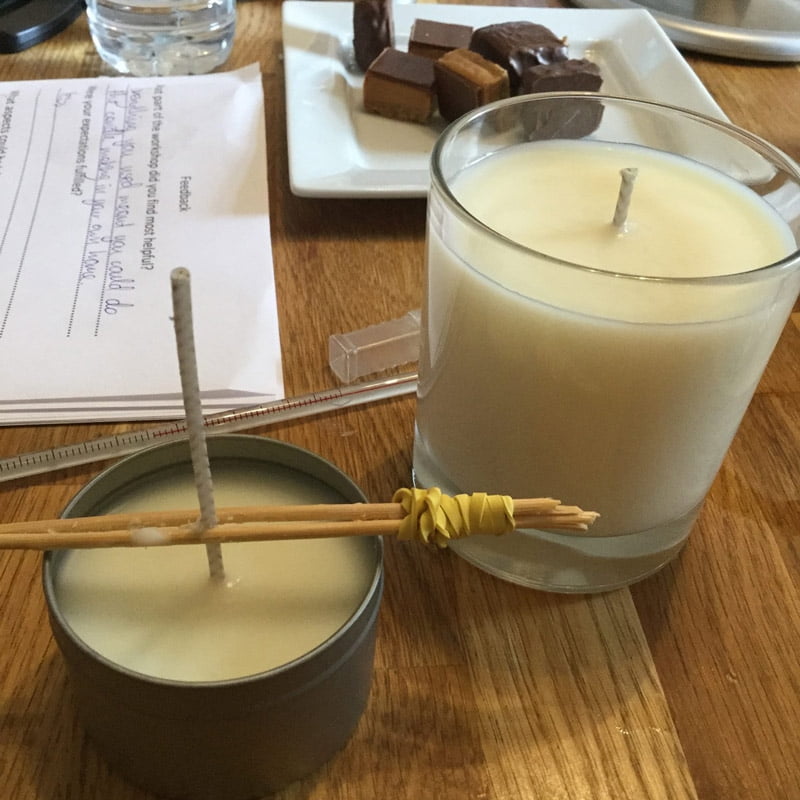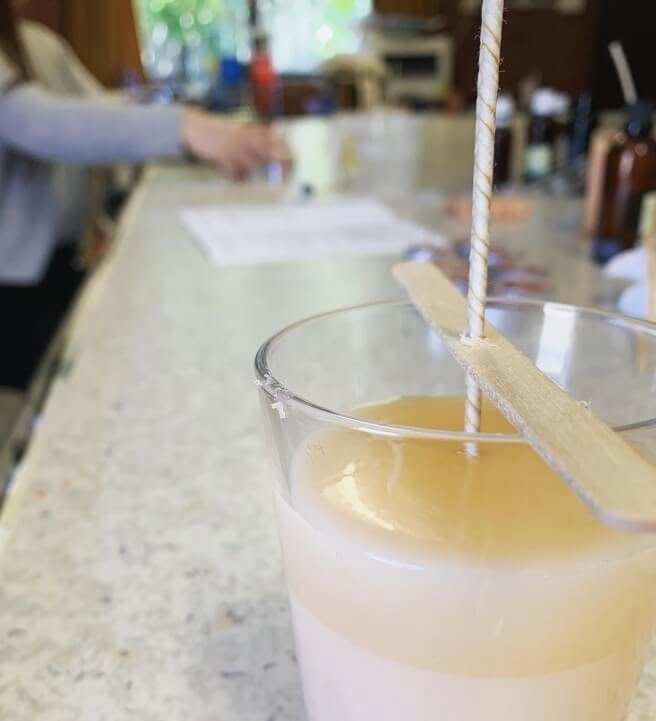When it comes to candle making, scent plays a crucial role in creating a truly captivating experience. The aroma of a candle has the power to transport us, evoke emotions, and enhance the ambiance of any space.
In this article, we will delve into the art of adding scent when making candles, exploring its significance and its ability to set the mood. Whether you are a beginner or an experienced candle maker, understanding how to choose the right fragrances and properly incorporate them throughout the candle making process can elevate your creations to new heights.
Scent is a powerful sense that has long been recognized for its ability to influence our emotions and well-being. Just as certain scents can trigger memories and associations, they can also create specific atmospheres and moods when incorporated into candles.
The right fragrance can turn a simple candle into an immersive experience that transports you to relaxing spa retreats, cozy winter nights by the fire, or even tropical beach vacations. By understanding how scents work together with other elements of your candles, you can enhance their overall effect and create something truly special.
Choosing the right fragrances for your candles is an essential aspect of candle making. With countless options available in both essential oils and fragrance oils, it’s important to understand their properties and how they interact with different wax types. Essential oils offer natural aromatherapy benefits alongside beautiful scents derived from plant sources.
Popular choices such as lavender for relaxation or citrus for an uplifting atmosphere can be used alone or blended together for unique combinations. On the other hand, fragrance oils provide a wide range of synthetic scents that allow for endless possibilities in creating customized fragrances that suit your preferences or match specific themes.
In this article, we will guide you through the various aspects of incorporating scent when making candles so you can hone your skills and unleash your creativity. From choosing the perfect fragrance options that complement your candles to understanding when and how to add scent throughout the process – we’ve got you covered. Get ready to unlock the full potential of scent in candle making and create unforgettable experiences through your own personalized candle fragrances.
Choosing the Right Fragrances for Your Candles
Choosing the right fragrances for your candles is a crucial step in creating the perfect scented candle. With so many fragrance options available, it can be overwhelming to know where to start. However, understanding the properties of different scents and knowing how to select fragrances that complement your candles will help you create a truly captivating sensory experience.
Exploring Different Fragrance Options: When it comes to choosing fragrances for your candles, the options are endless. From floral and fruity scents to woody and herbal aromas, there is something for every preference and occasion. You can find fragrance oils specifically designed for candle making that offer a wide range of scents. Additionally, essential oils extracted from plants provide natural aromatherapy benefits and can be used in candle making.
Understanding Scent Properties: Each fragrance has its own unique properties that contribute to the overall scent experience of a candle. Some scents are known for their calming effects, while others are energizing or uplifting.
It’s important to consider the mood or ambiance you want to create when selecting fragrances for your candles. For example, lavender and chamomile are commonly used in candles meant for relaxation and stress relief, while citrus scents like lemon or orange can create a refreshing and invigorating atmosphere.
Tips for Selecting Complementary Scents: When choosing fragrances for your candles, it’s helpful to consider how different scents work together. One approach is to choose complementary scents from different fragrance families, such as combining floral with citrus or woody notes with herbal undertones. This blending technique adds complexity and depth to the scent profile of your candle.
Another tip is to consider seasonal or thematic combinations that evoke specific emotions or memories. For example, combining warm spices like cinnamon and nutmeg with vanilla can create a cozy ambiance perfect for fall or holiday-themed candles.
Essential Oils
Essential oils are a popular choice for adding scent when making candles because they offer numerous benefits. Derived from natural plant sources, essential oils not only provide fragrance but also possess therapeutic properties that can enhance the overall ambiance and mood. When using essential oils in candle making, it is important to understand their individual characteristics and benefits.
There are a wide variety of essential oils available, each with its own unique scent and properties. Some popular options for candle making include lavender, citrus, eucalyptus, and peppermint. Lavender essential oil is known for its calming and relaxing effects, making it ideal for creating a soothing atmosphere.
Citrus scents such as lemon or orange can help uplift the mood and create an energizing environment. Eucalyptus essential oil has a refreshing aroma that can promote feelings of clarity and focus. Peppermint essential oil offers a cool and invigorating scent that can help alleviate stress and improve concentration.
To achieve the desired scent intensity when using essential oils in candles, it is important to consider factors such as the type of wax used and the size of the candle container. For example, soy wax tends to have a stronger scent throw compared to other waxes, while smaller containers may require less essential oil for optimal fragrance distribution.
When adding essential oils to your candles, it is recommended to follow proper safety guidelines. Essential oils are highly concentrated substances and should be handled with care. It is advisable to wear gloves and protective eyewear when working with them to avoid any potential skin irritation or eye damage. Additionally, store your essential oils in a cool, dark place away from sunlight to maintain their potency.
By incorporating essential oils into your candle making process, you can create unique scents that not only smell wonderful but also offer aromatherapeutic benefits. Experimenting with different combinations of essential oils will allow you to discover your signature candle fragrances and add a personal touch to your creations.
- Essential oils offer fragrance and therapeutic benefits
- Popular options include lavender, citrus, eucalyptus, and peppermint
- Consider factors such as wax type and container size for desired scent intensity
- Follow safety guidelines when working with essential oils
- Explore different combinations to create personalized candle fragrances
Fragrance Oils for Customized Candle Scents
When it comes to creating customized scents for your candles, fragrance oils are a great option to consider. Unlike essential oils, fragrance oils are synthetic and created to mimic specific scents. They offer a wide range of options and can be blended together to create unique and personalized fragrances for your candles.
One advantage of using fragrance oils is their versatility. They come in a variety of scents, from floral and fruity to woody and spicy. This diversity allows you to experiment with different combinations and create candles that cater to different preferences. Whether you’re looking to create a calming lavender-scented candle or a refreshing lemon verbena fragrance, there’s a fragrance oil available to help you achieve it.
Blending different fragrance oils together can also open up even more possibilities for unique scents. By mixing complementary notes such as vanilla and cinnamon or bergamot and sandalwood, you can create complex aromas that add depth and character to your candles.
To ensure the best results when using fragrance oils, it’s important to select high-quality oils from reputable suppliers. Look for oils that are specifically formulated for candle making, as these will have proper stability and perform well in the wax.
| Fragrance Oil | Main Scent Profile |
|---|---|
| Vanilla | Rich, sweet, creamy |
| Lavender | Floral, herbal, calming |
| Sandalwood | Woody, warm, earthy |
| Citrus Burst | Bright, refreshing, zesty |
| Pomegranate | Fruity, juicy, slightly tart |
| Spiced Apple | Warm, cinnamon, apple pie-like |
| Ocean Breeze | Crisp, clean, aquatic |
Remember to start with small quantities when blending fragrances and test them in a small sample candle before committing to larger batches. This way, you can adjust the ratios as needed and ensure that the final scent is exactly what you desire.
By utilizing fragrance oils and experimenting with different combinations, you have the opportunity to create truly customized candle scents that will captivate your senses and delight those who experience them. So don’t be afraid to explore the vast world of fragrance oils and let your creativity run wild in your candle making journey.
Proper Timing
The timing of when you add scent to your candles can greatly impact the overall fragrance performance. By strategically adding scent throughout the candle making process, you can achieve optimal scent distribution and ensure a long-lasting and pleasant aroma.
There are several techniques for adding scent to melted wax. One common method is to add fragrance oil when the wax reaches its melting point. This allows the fragrance to blend evenly with the wax as it melts, resulting in a more consistent scent throughout the entire candle.
Another technique is to add fragrance oil just before pouring the melted wax into the container or mold. This method allows for more control over the intensity of the scent and gives you the opportunity to adjust it according to your preference.
The timing of when you add scent also depends on the desired strength of fragrance in your candles. If you want a subtle scent, it is recommended to add fragrance oil during the early stages of melting when only a small portion of wax has melted. On the other hand, if you prefer a stronger and more intense aroma, you can add fragrance oil when most of the wax has melted.
| Technique | Advantages |
|---|---|
| Add fragrance oil when wax reaches its melting point | Ensures even blending of fragrance with melted wax |
| Add fragrance oil just before pouring melted wax into container or mold | Allows for more control over intensity and adjustment of scent |
In addition to considering when to add scent, it’s also important to understand why adding scent at different stages of the candle making process can be beneficial. During initial melting, adding fragrance oils can help eliminate any residual odors from unscented waxes or other additives used in the candle making process.
This ensures a clean and fresh base for your desired scent. Adding scent later in the process, such as when pouring the melted wax, allows for better scent retention since the fragrance is less likely to evaporate during the heating and cooling processes.
To further optimize scent distribution in your candles, consider using a fragrance calculator to determine the appropriate amount of fragrance oil to add based on the weight of your wax. This will help you achieve the right scent-to-wax ratio and avoid overpowering or weak fragrances.
By carefully choosing when to add scent and following proper guidelines, you can enhance the overall fragrance performance of your candles and create an enjoyable sensory experience for yourself and others.
Dos and Don’ts of Scenting Candles
Common Mistakes to Avoid when Adding Scent to Candles
When it comes to scenting candles, there are a few common mistakes that beginners often make. One of the most important things to remember is not to add too much fragrance oil or essential oil to your candle wax. Adding too much scent can result in a candle that is overpowering and unpleasant. It’s always best to start with a lower amount of fragrance and gradually increase it if needed.
Another mistake to avoid is using low-quality scent oils. Cheaper fragrance oils may not have a strong enough scent or may contain additives that can affect the performance of your candles. It’s essential to invest in high-quality fragrance oils from reputable suppliers to ensure optimal scent throw and overall quality of your candles.
Expert Tips for Ensuring the Right Scent-to-Wax Ratio
Achieving the right scent-to-wax ratio is crucial for creating well-balanced and nicely scented candles. As a general rule of thumb, it is recommended to use about 6-10% fragrance oil per pound of wax. However, this ratio can vary depending on the specific fragrance you’re using and personal preference.
To determine the ideal scent-to-wax ratio for your candles, it’s highly recommended to conduct small test batches before making larger quantities. Start by melting a small amount of wax and adding a measured amount of fragrance oil based on the percentage you want to use.
Allow the candle to cure for at least 24 hours before testing its scent throw. If you find that the scent is too weak, increase the fragrance oil percentage slightly in your next test batch.
Safety Guidelines for Using Scents in Candle Making
While adding scents enhances the allure of candles, it’s important to consider safety precautions when working with fragrances. Always follow safety guidelines provided by your supplier when handling and storing essential oils or fragrance oils. These substances can be highly concentrated and may cause skin irritation or allergic reactions if not handled properly.
Also, be cautious when using essential oils derived from plants that are known to have potential adverse effects, such as the phototoxicity of certain citrus essential oils. It’s important to research and understand the specific properties and safety considerations of each essential oil before incorporating them into your candle making process.
Remember to keep all scents out of reach of children and pets, as some fragrances can be harmful if ingested. Properly label your fragrance bottles to avoid confusion and accidental misuse.
By following these dos and don’ts, you’ll be on your way to creating beautifully scented candles that delight the senses while ensuring a safe and enjoyable candle making experience.
Experimenting With Scent
Experimenting with scent is a fun and creative way to add a personal touch to your candle making process. By creating your own signature candle fragrance, you can craft unique and memorable scents that will set your candles apart from the rest. Whether you’re making candles for yourself or as gifts, this section will guide you through the process of experimenting with scent to create a truly special candle experience.
Step-by-Step Guide to Creating a Personalized Candle Fragrance
To begin creating your signature candle fragrance, start by selecting a base scent or combination of scents that you love. This could be anything from floral notes like lavender or rose, to warm and cozy scents like vanilla or cinnamon. Once you have chosen your base scent, consider adding complementary scents to enhance and personalize the fragrance.
Next, gather a variety of essential oils and fragrance oils that align with your chosen scents. Essential oils are derived from natural sources such as plants, while fragrance oils are synthetic blends created specifically for use in candles. Experiment with different combinations and ratios of these oils to find the perfect balance for your desired fragrance.
Once you have selected your oils, it’s time to mix them together. Start with small amounts and gradually increase the quantity as needed. Remember that a little goes a long way when it comes to scenting candles, so start with just a few drops at first and adjust accordingly.
Suggestions for Incorporating Unique and Unexpected Scents
One of the joys of experimenting with scent is the opportunity to incorporate unique and unexpected aromas into your candles. Consider adding unusual but complementary ingredients such as herbs or spices that can add depth and complexity to your fragrances. For example, try adding fresh mint leaves for a refreshing twist or crushed cardamom pods for an exotic touch.
Furthermore, don’t shy away from combining different scent families together – floral with citrus or woodsy with sweet. These unexpected combinations can create one-of-a-kind scents that are sure to leave a lasting impression. Don’t be afraid to think outside the box and let your creativity guide you.
Troubleshooting Scent Issues in Candle Making
Candle making is a delicate process that requires attention to detail, especially when it comes to adding scent. However, even with careful planning and execution, scent-related issues can still arise. This section will address common problems with scent distribution in candles and provide troubleshooting tips to help you overcome these challenges.
One common issue that candle makers may encounter is poor scent throw, which refers to the intensity of the fragrance when the candle is burning. If your candles are not emitting enough scent or the fragrance doesn’t fill the room as desired, there are a few possible reasons for this problem. First, you may have used an insufficient amount of fragrance oil.
It’s essential to follow the recommended usage rate provided by the fragrance manufacturer. Increasing the amount of oil slightly can help enhance the scent throw without compromising the quality of your candle.
Another reason for poor scent throw could be inadequate mixing of the fragrance oil into the melted wax. It’s crucial to thoroughly stir or gently agitate the wax and fragrance oil mixture to ensure even distribution of the scent throughout the candle. Uneven mixing can result in pockets of concentrated fragrance or areas with little to no scent.
Additionally, factors such as wick size and type can also affect how well a candle releases its fragrance when burned. Using a properly sized wick that is suitable for your candle’s diameter will help achieve optimal hot throw, which is when scents are released as the candle burns. Researching and experimenting with different wick options can significantly improve scent distribution.
Lastly, it’s important to consider your environment when assessing scent issues in candle making. Factors like room size, airflow, and ventilation can all impact how well a candle’s fragrance permeates a space. If you find that your candles are lacking in fragrance performance, try burning them in various locations within your home or using them in smaller enclosed spaces where fragrance diffusion is easier.
By addressing these potential causes and implementing troubleshooting techniques, you can overcome scent-related issues in your candle making. Remember that achieving the perfect scent distribution may require some trial and error, so don’t be discouraged if you encounter setbacks along the way. With perseverance and an understanding of the factors influencing scent throw, you can create candles that fill any space with delightful fragrance.
Conclusion
In conclusion, scent plays a crucial role in the art of candle making. As we have explored throughout this article, the right fragrance can enhance the ambiance and mood of any space. Whether you are looking to create a cozy atmosphere in your home or evoke specific emotions through your candles, scent is a powerful tool that should not be overlooked.
Choosing the right fragrances for your candles is key to achieving the desired effect. By understanding the properties of different scents and selecting ones that complement your candles, you can create truly unique and captivating experiences for yourself and others. Whether you prefer the natural aromatherapy benefits of essential oils or the versatility and customization options provided by fragrance oils, there are endless possibilities to explore when it comes to adding scent to your candle creations.
Throughout this article, we have provided tips, advice, and troubleshooting techniques to help you navigate the world of scent in candle making. However, it is important to remember that candle making is an art form that allows for personal creativity and experimentation. We encourage you to continuously explore different scent combinations, follow your instincts, and create signature candle fragrances that truly reflect your style and personality.
So why wait? Start adding scents to your candles today. Transform ordinary wax into extraordinary sensory experiences that will leave a lasting impression on everyone who encounters them. Embrace the power of scent in candle making, and let it elevate your craft to new heights. Happy creating.
Frequently Asked Questions
What do you use for scent in candle making?
In candle making, various types of scents can be used to add fragrance. The most common form of scent used is fragrance oils, which are concentrated versions of specific scents or blends.
These oils are specifically formulated to be safe for use in candles and can be found in a wide range of options, from floral and fruity scents to more unique and exotic aromas. Additionally, some crafters also experiment with using essential oils in their candle making, although it’s important to note that not all essential oils are suitable for candle making as some may have low flash points or may not effectively blend with the wax.
Why don’t my homemade candles smell?
There could be several reasons why homemade candles may not emit a strong scent. Firstly, the type and quality of the fragrance oil being used could affect its potency. If the oil is diluted or of inferior quality, it may result in a weak scent throw.
Another factor could be the wax itself – certain waxes have better scent retention properties compared to others. Additionally, the amount of fragrance oil used might not be sufficient for the size of the candle being made; finding the right balance between wax and fragrance is crucial. Lastly, factors such as room size, drafts, or other competing smells in the environment where the candles are burned can also impact how strongly they smell.
How do I make my own candle scent?
Making your own candle scent can be an enjoyable and creative process! One way to create your custom scent is by blending different fragrances together. Experiment with combining different fragrance oils or even mixing them with essential oils if suitable for candle making. Start by adding small amounts of each oil and testing them out before settling on a final ratio that creates a pleasing aroma when burned.
It’s important to keep track of your combinations so you can recreate successful blends later on. Another option is infusing natural materials into your candles such as dried flowers, herbs, or even spices like cinnamon sticks or cloves for a personalized touch and unique scent. Remember to test your creations before making larger batches to ensure they meet your desired scent intensity and performance.

Welcome to my candle making blog! In this blog, I will be sharing my tips and tricks for making candles. I will also be sharing some of my favorite recipes.





